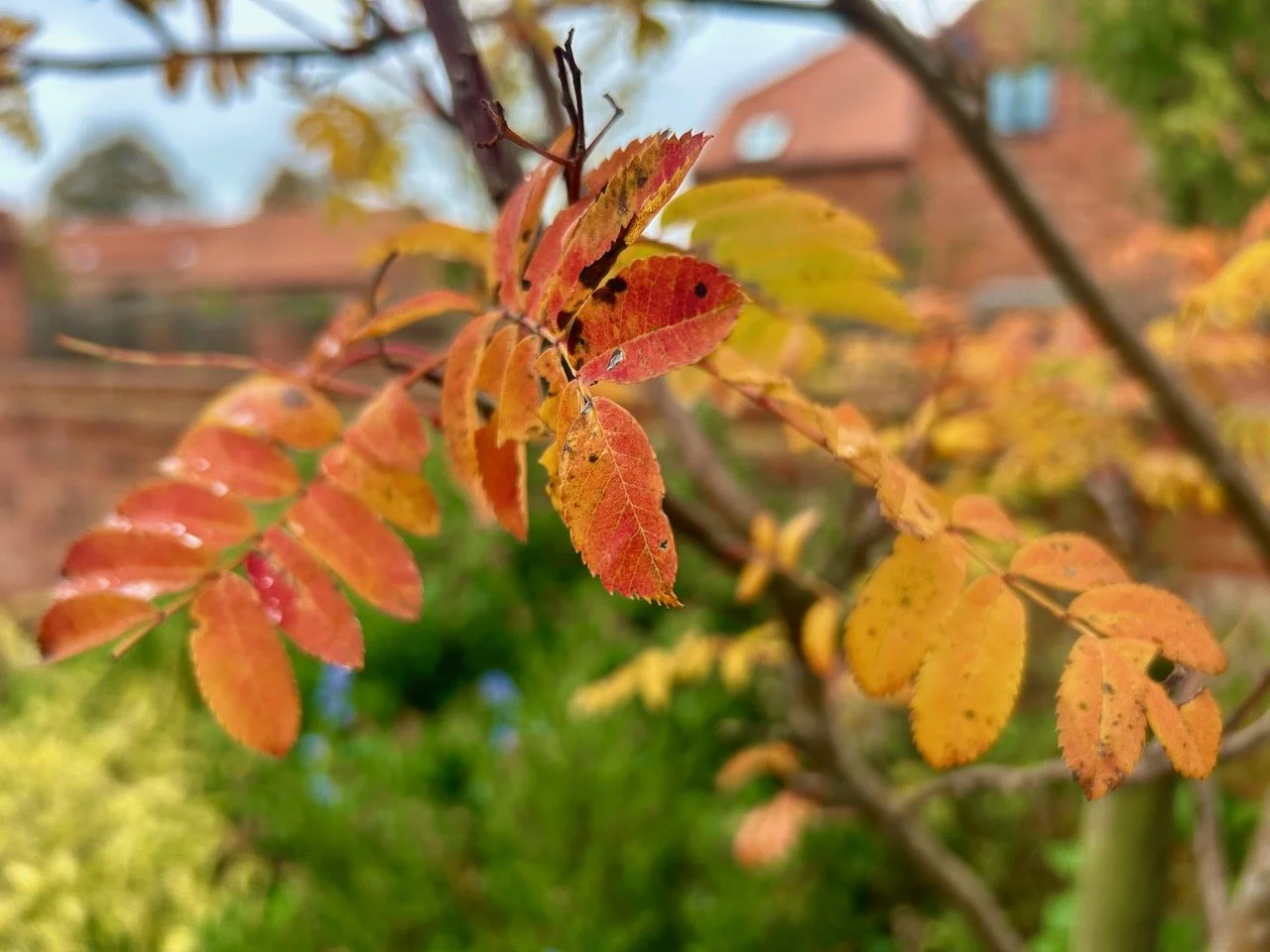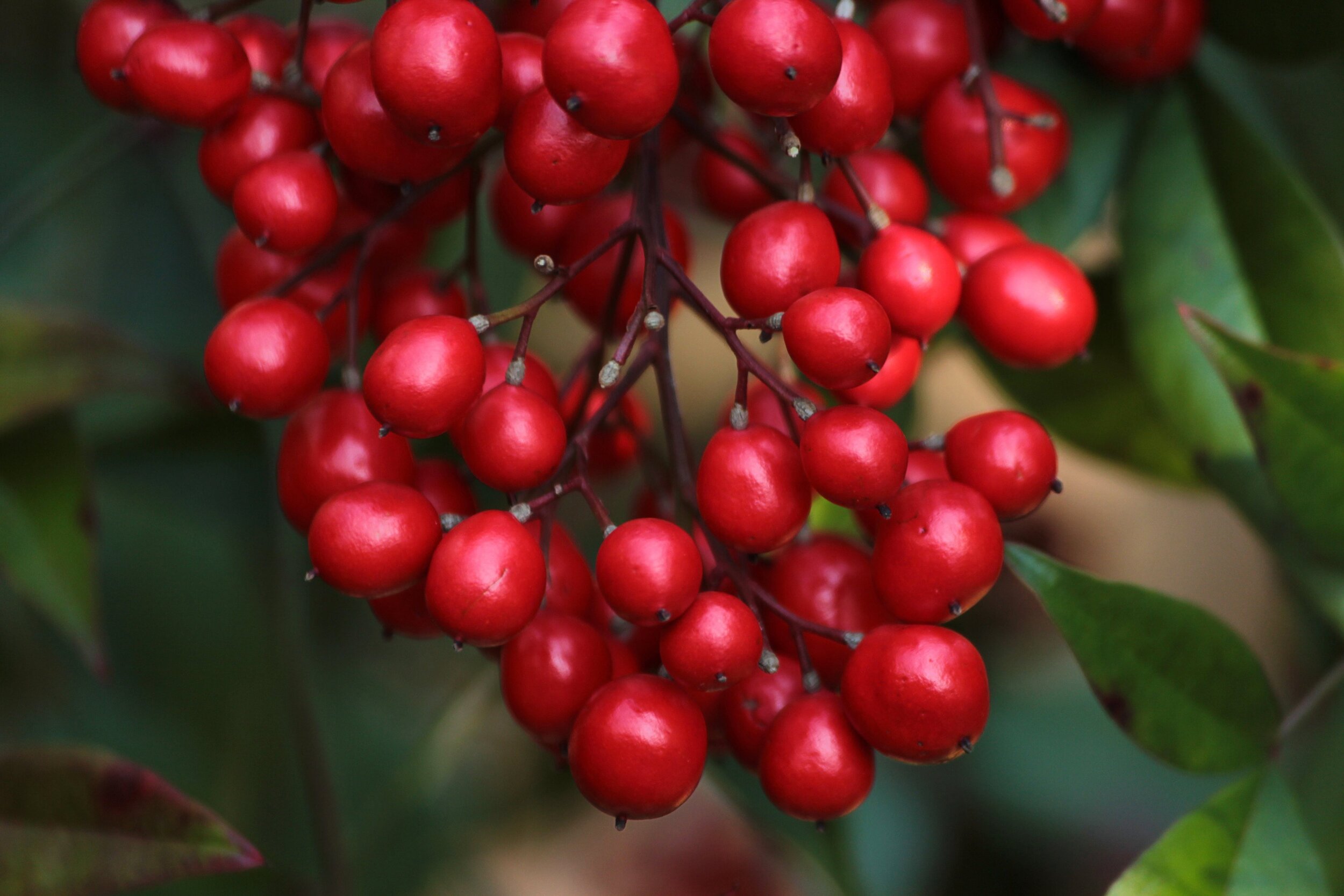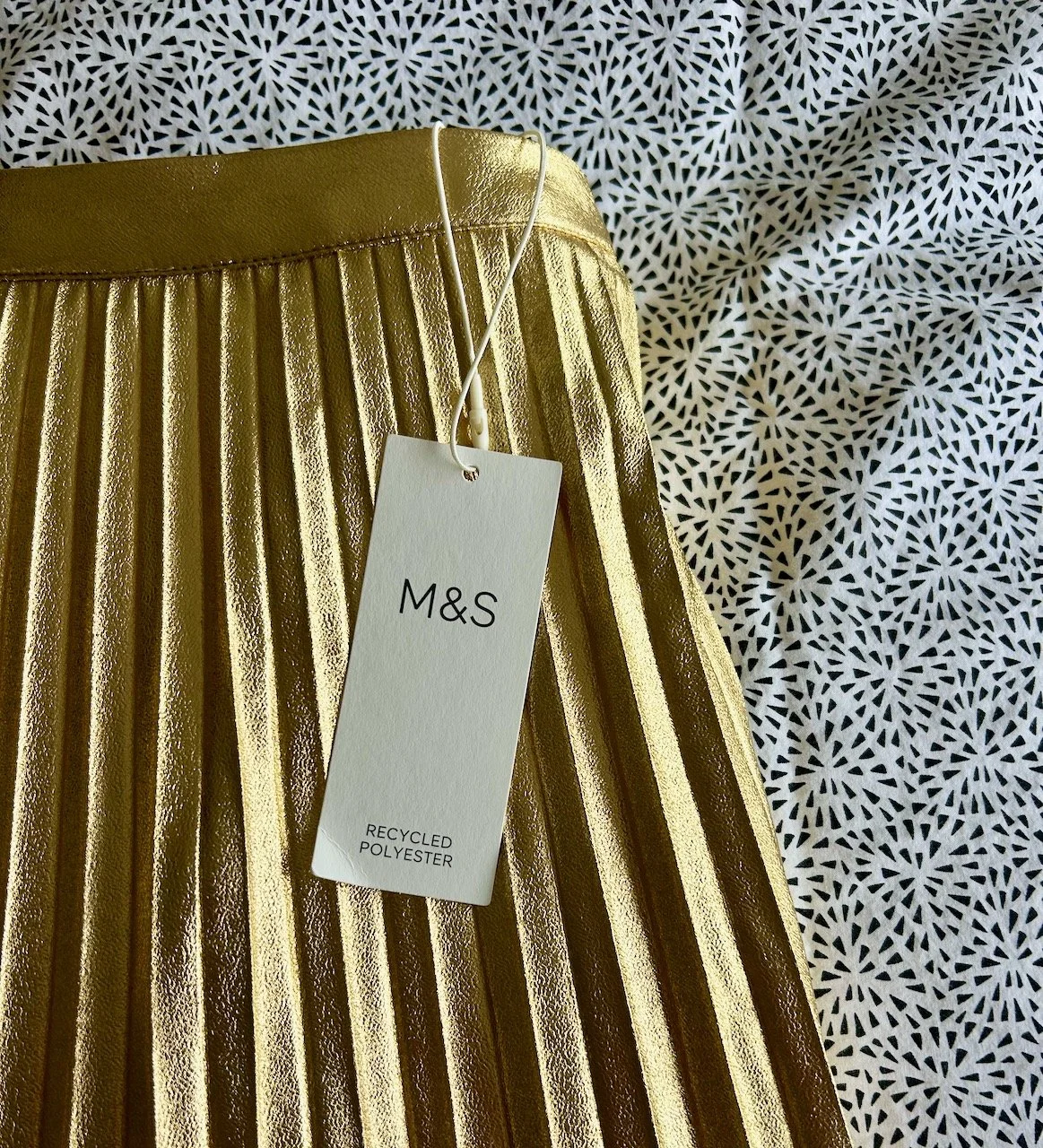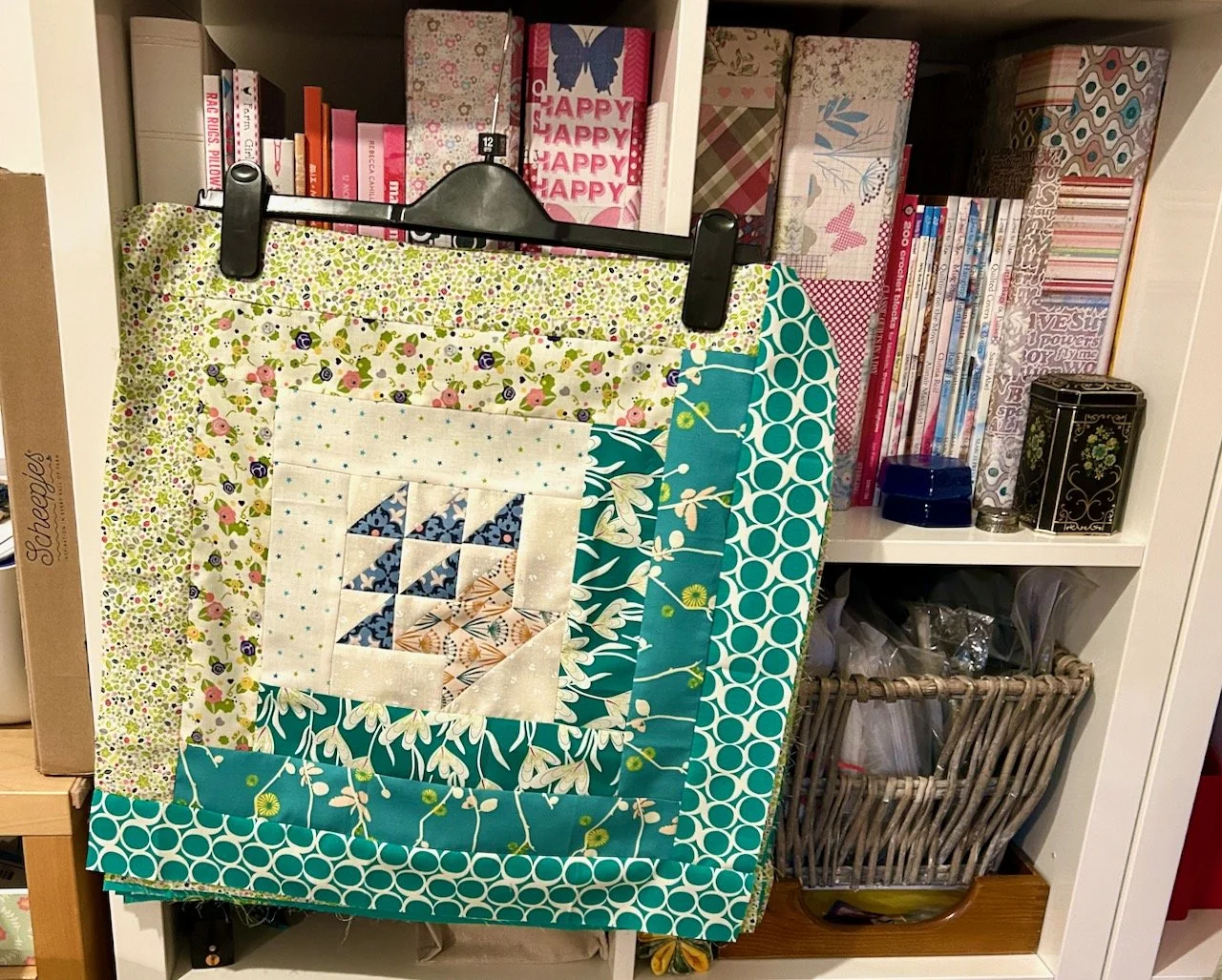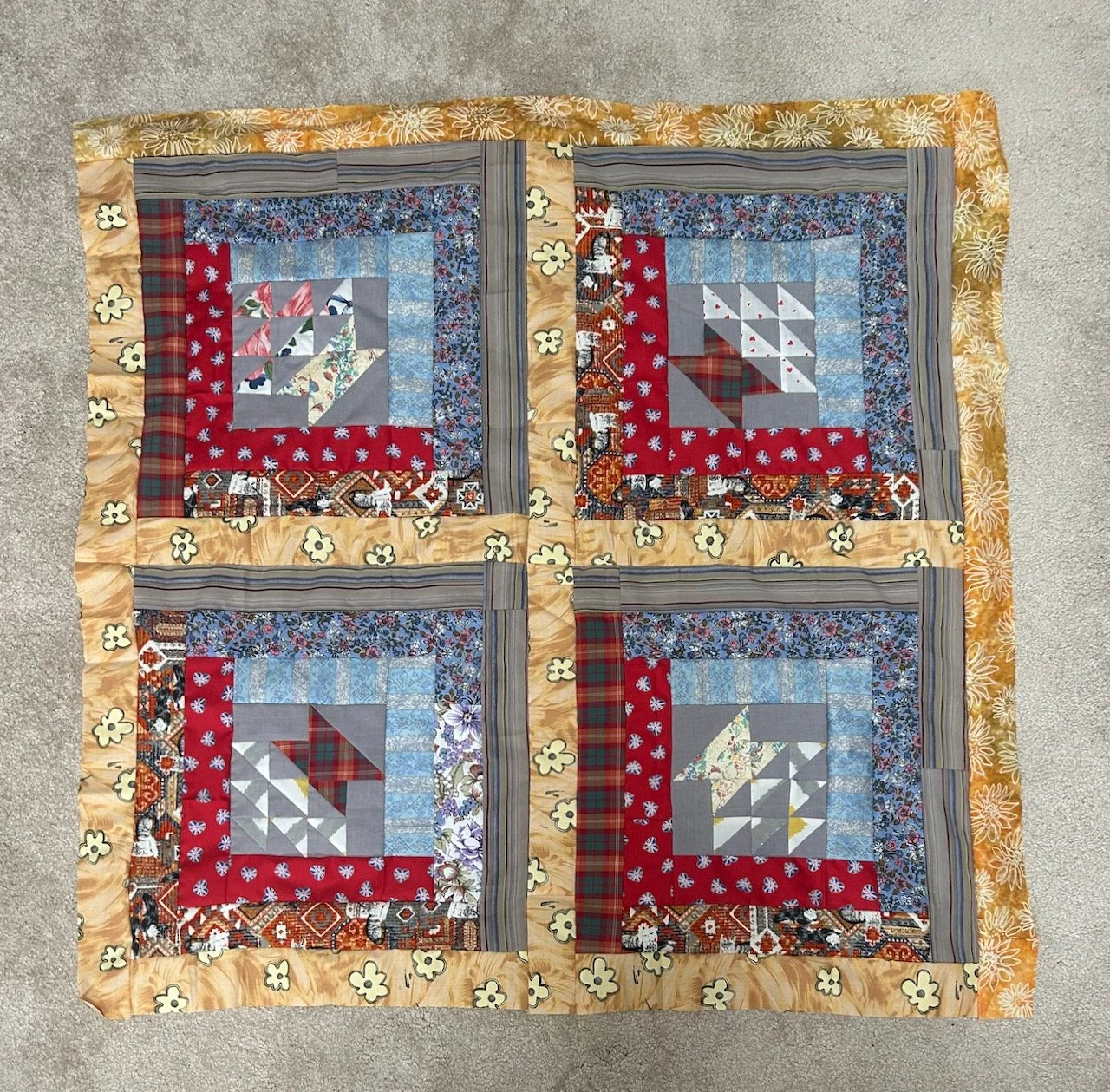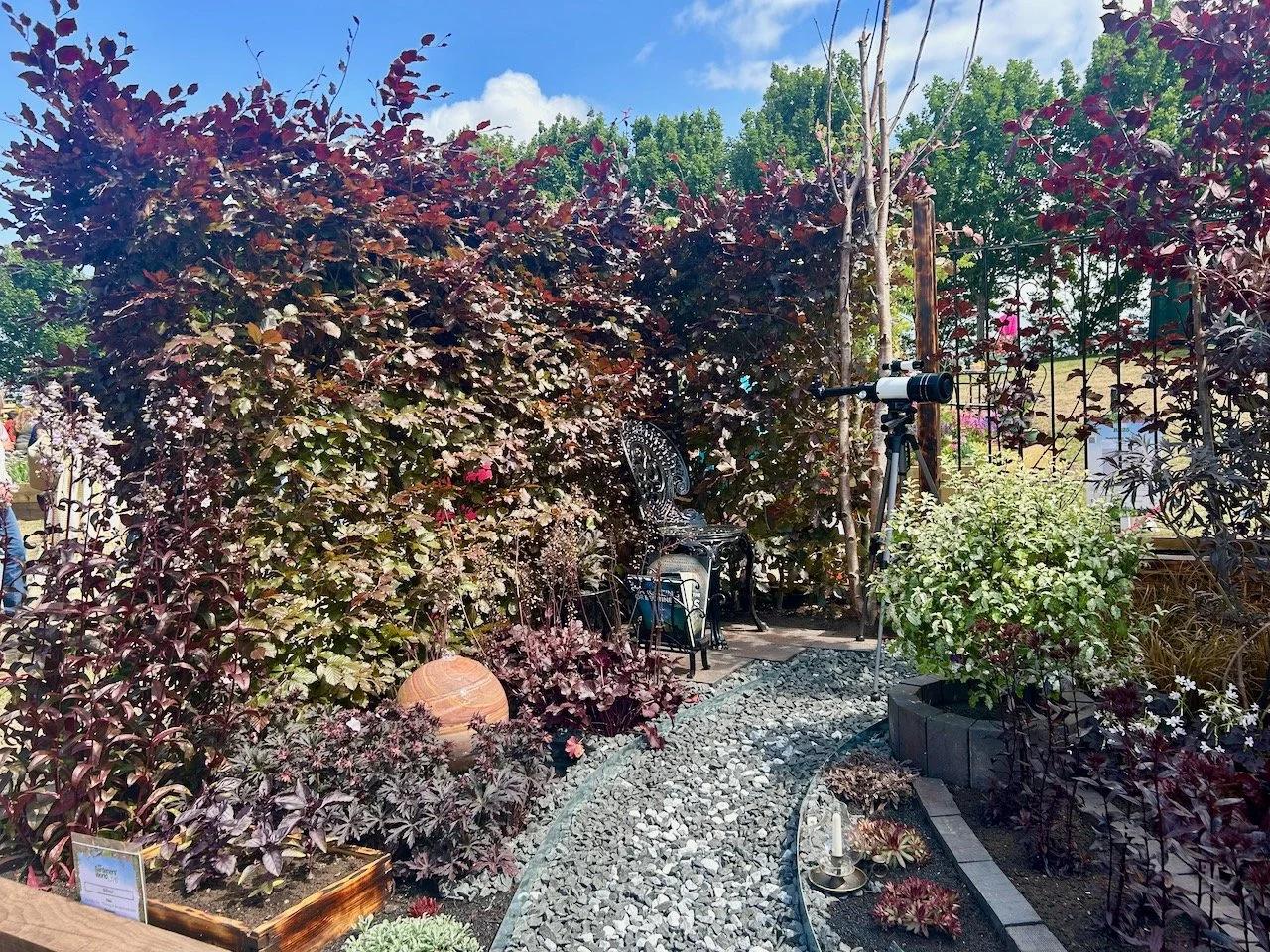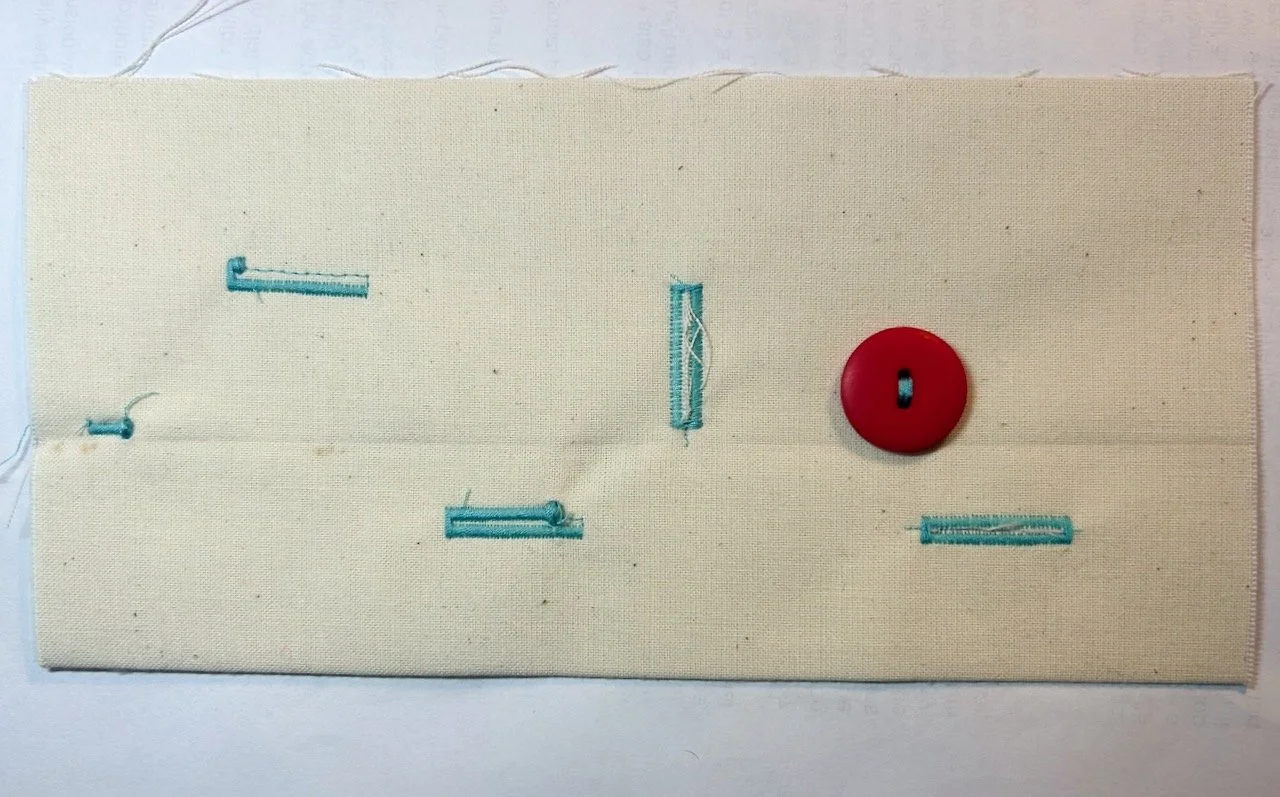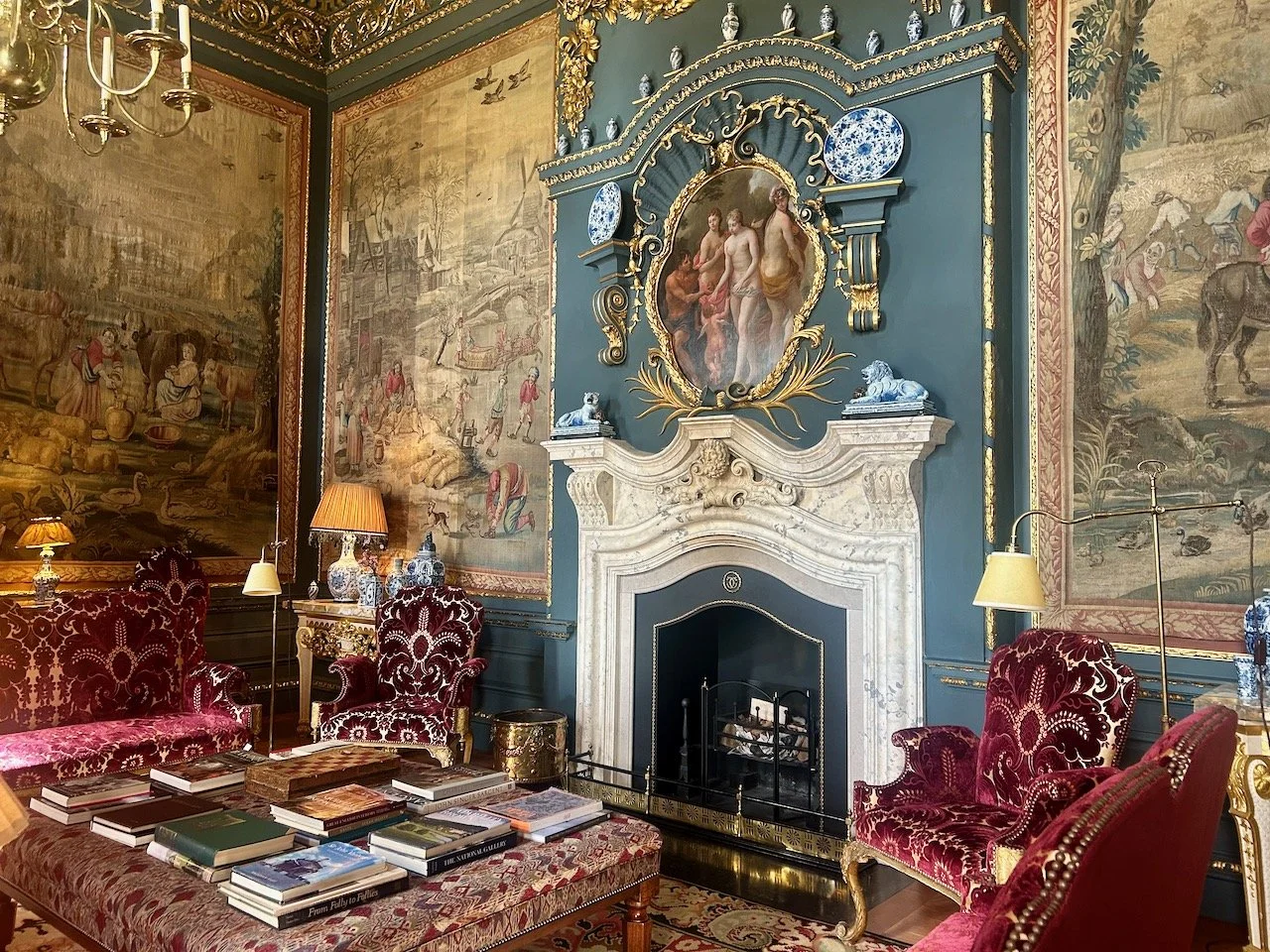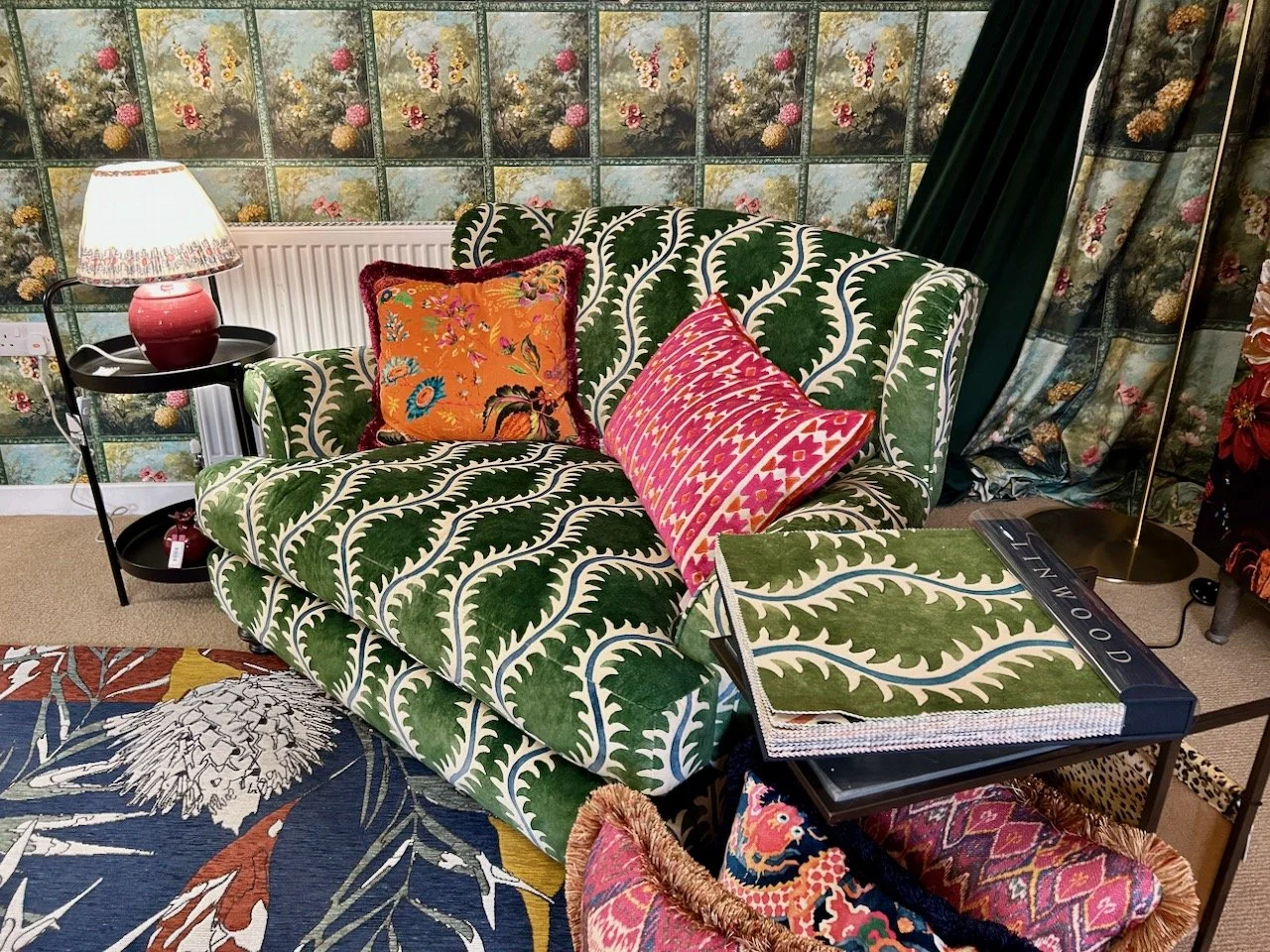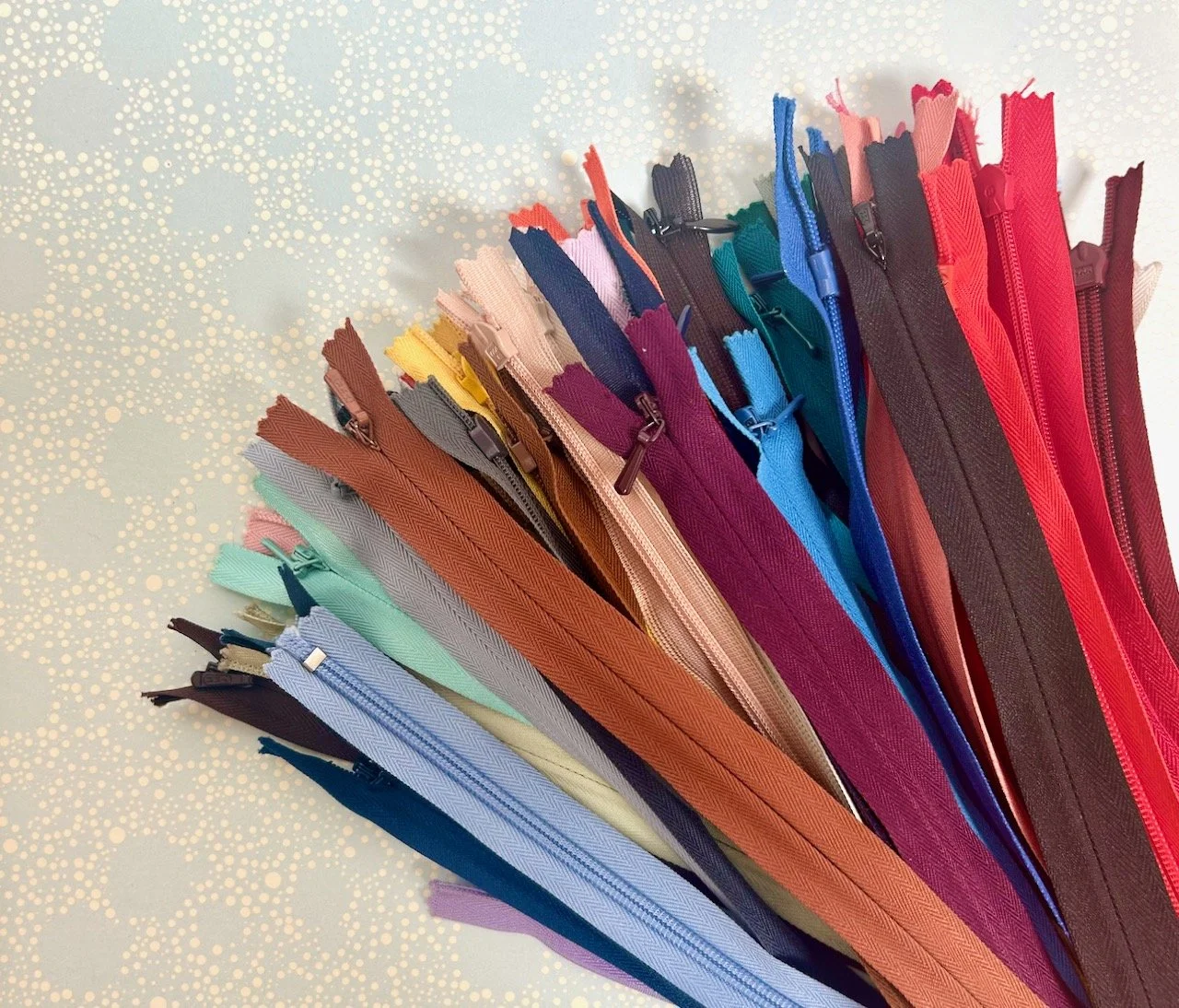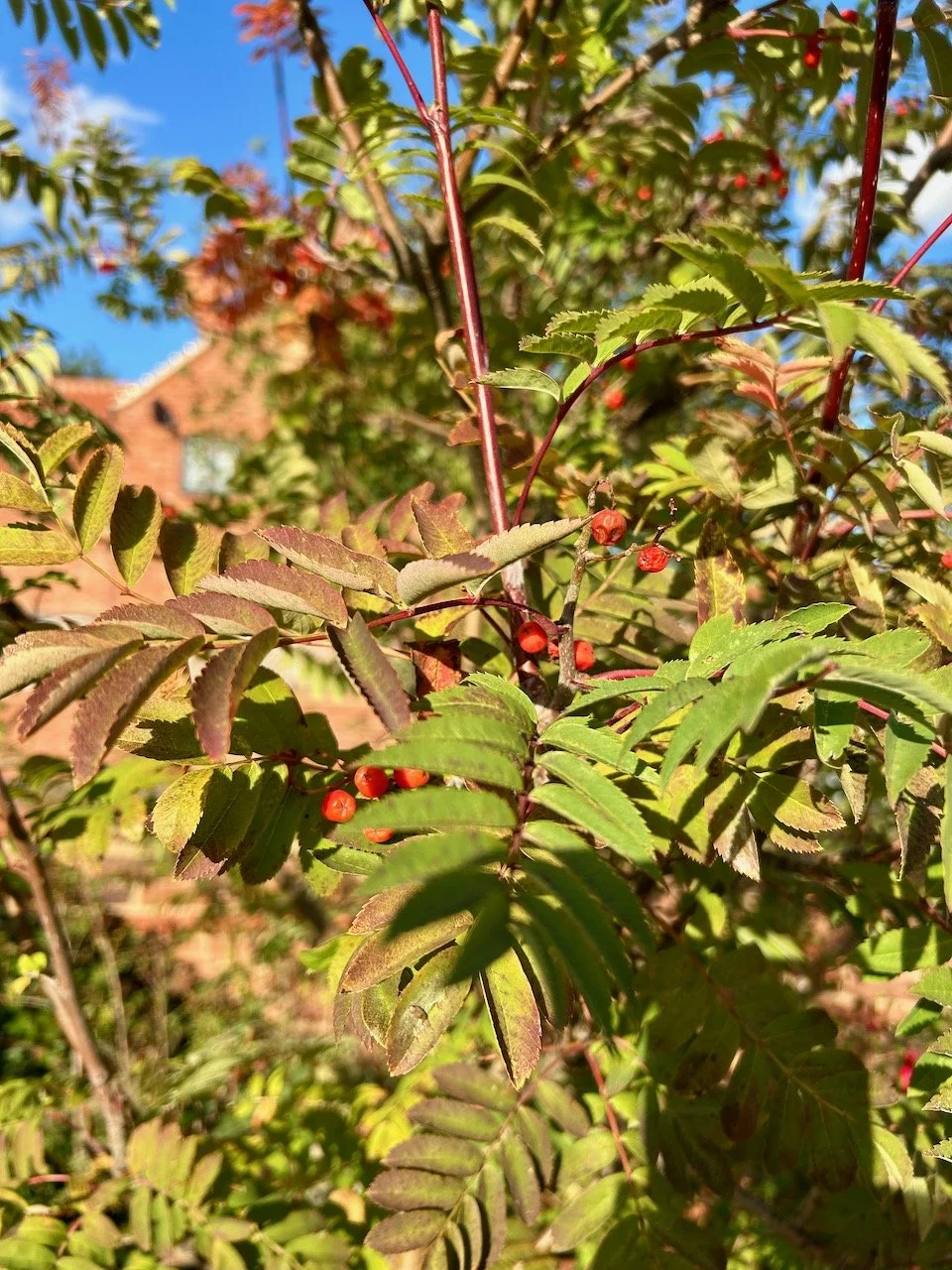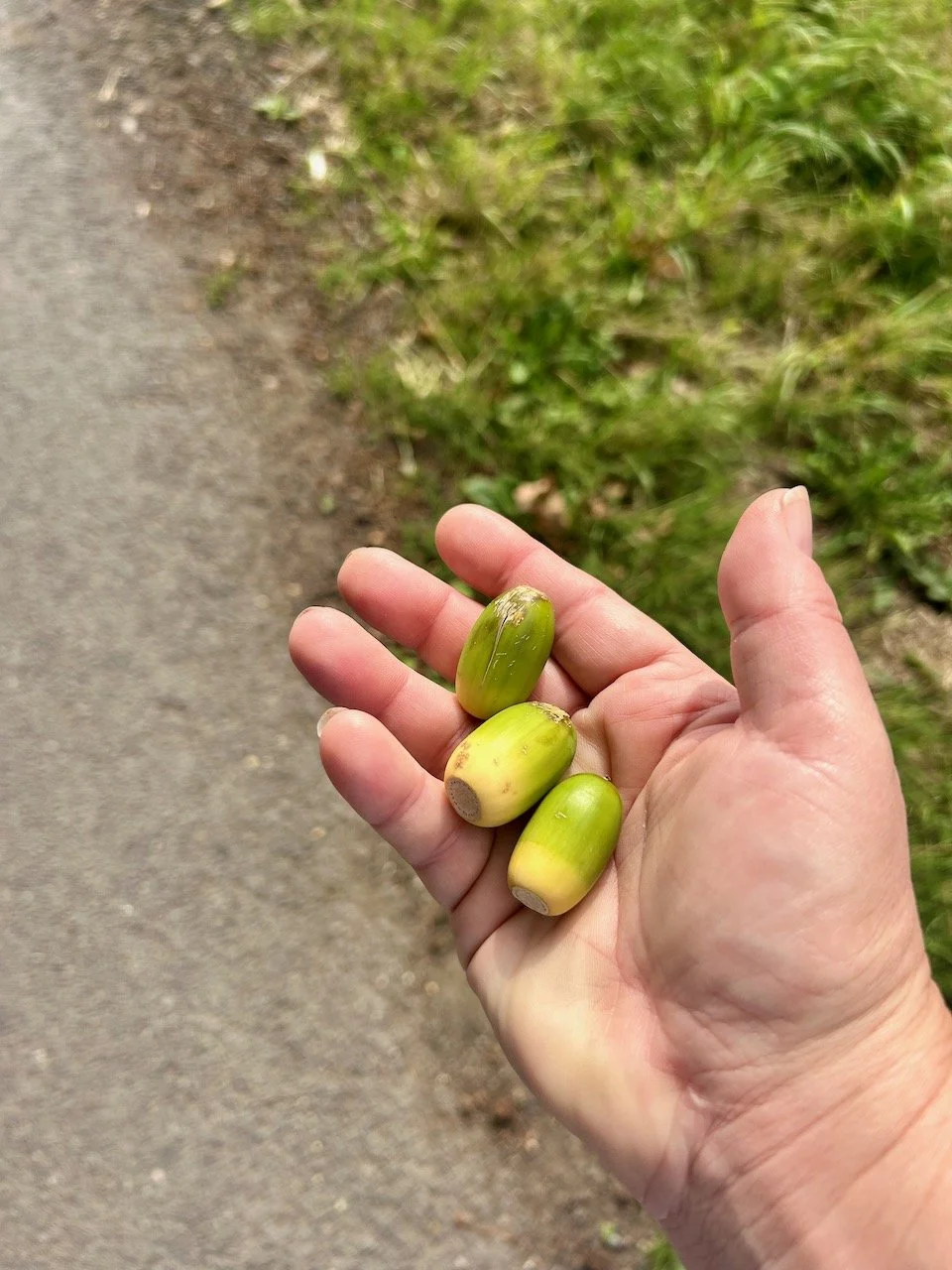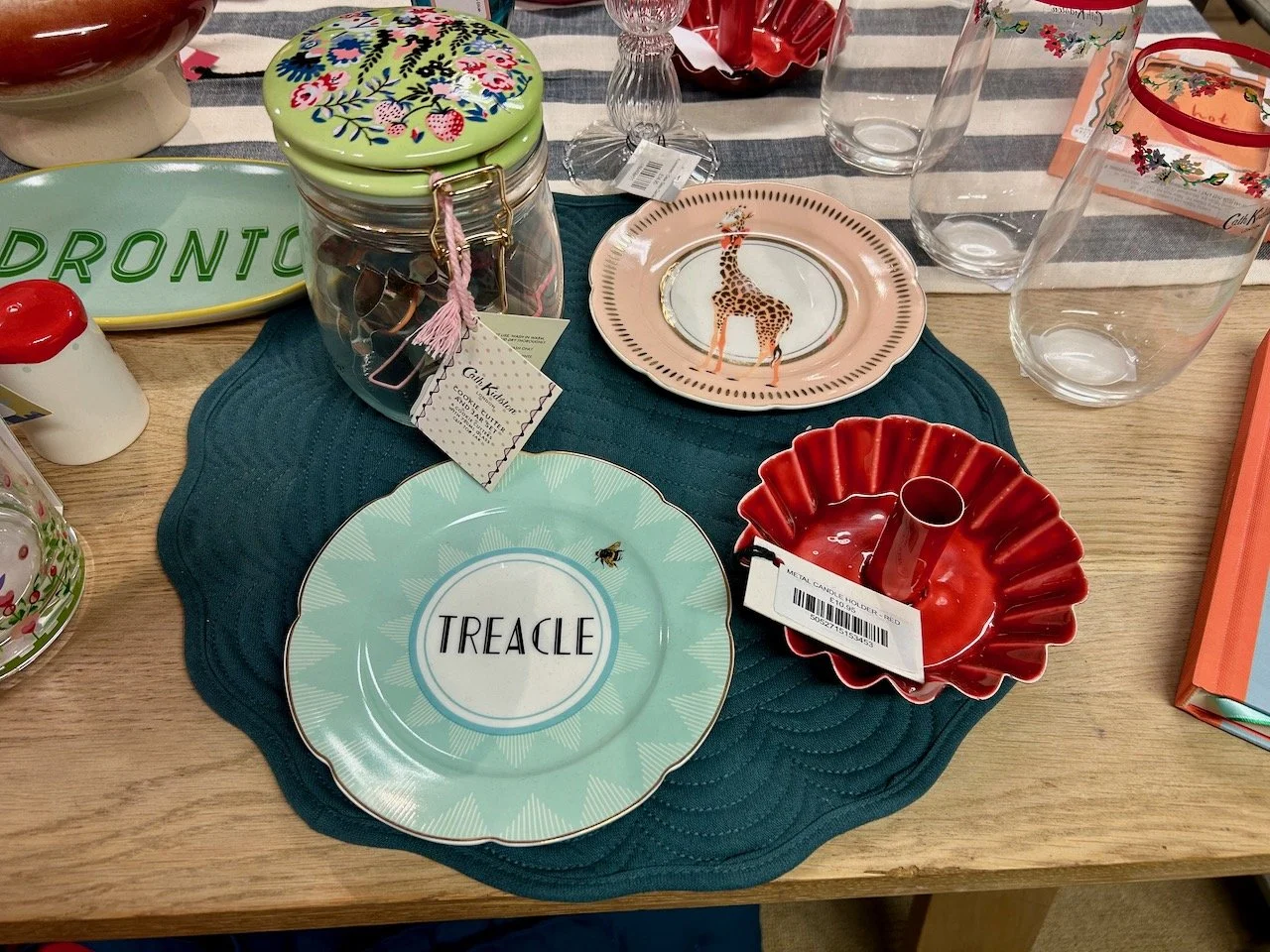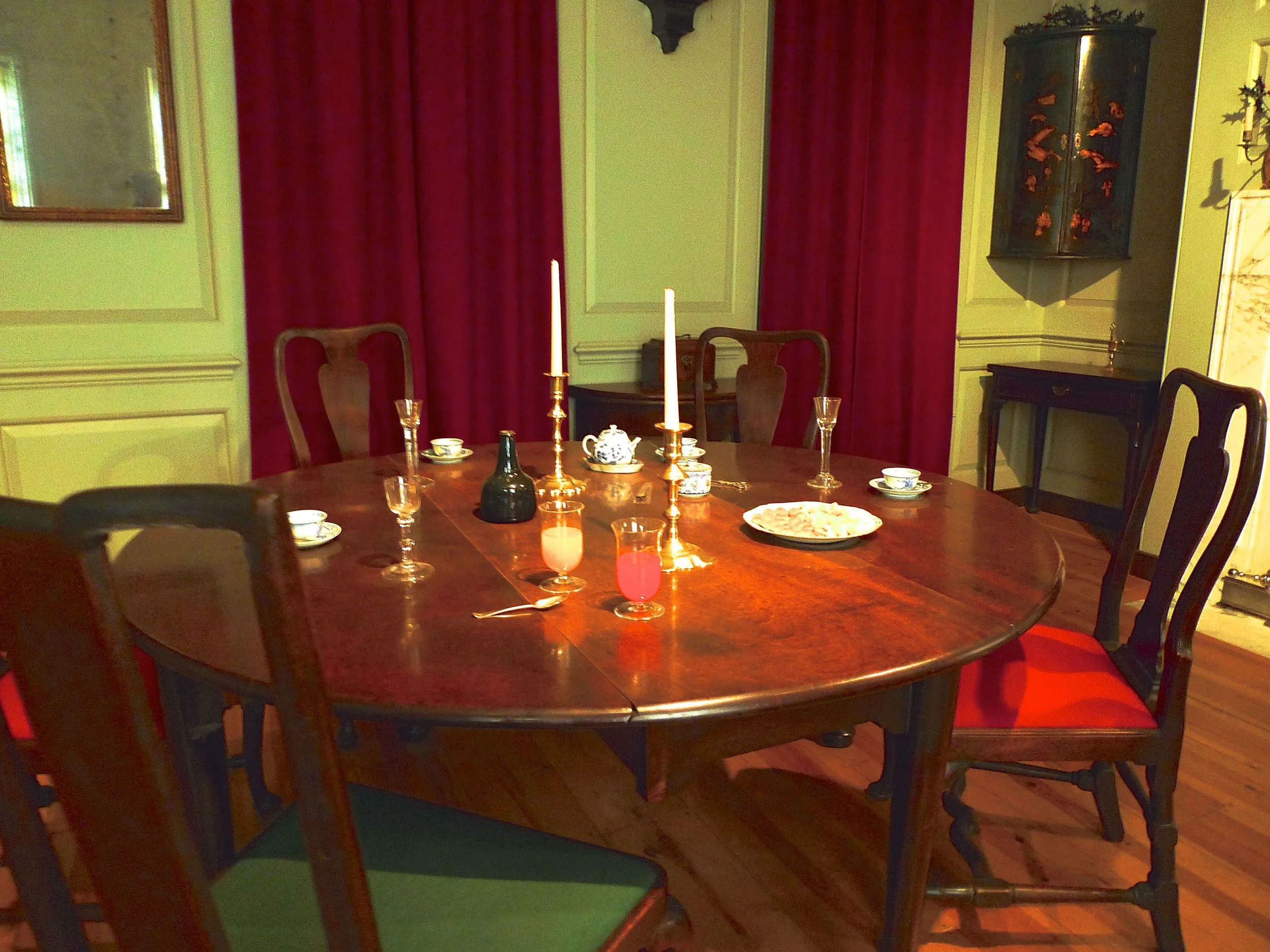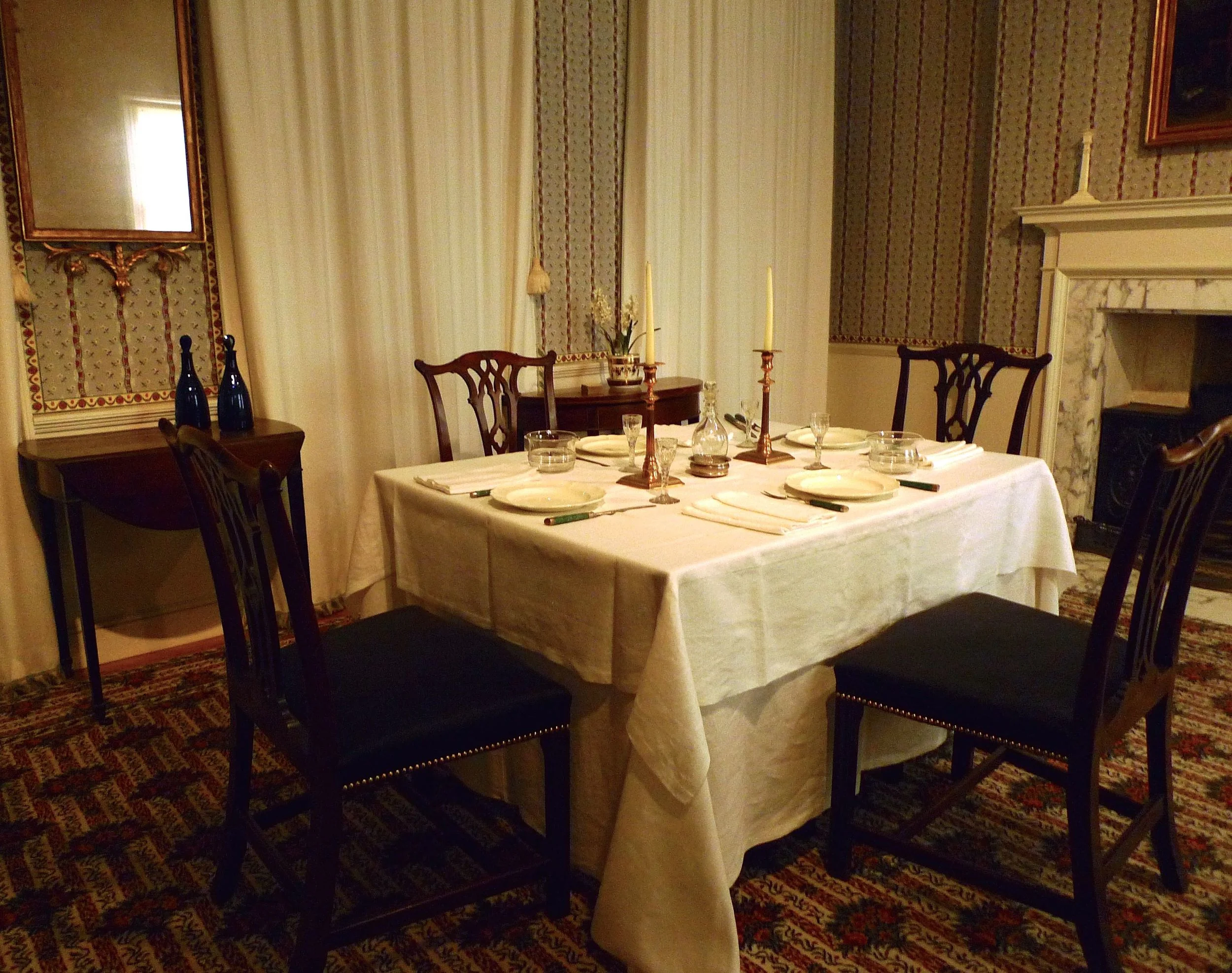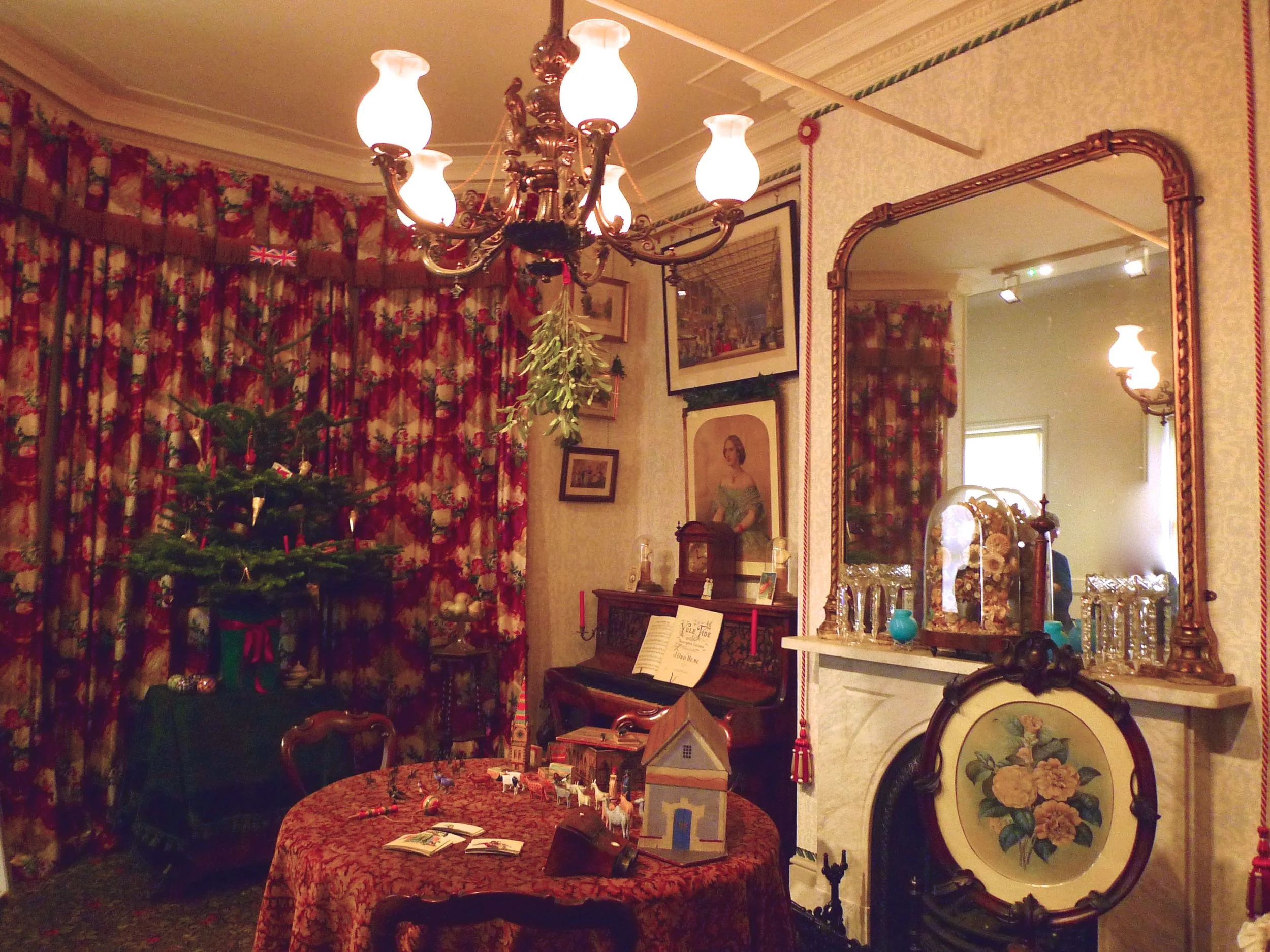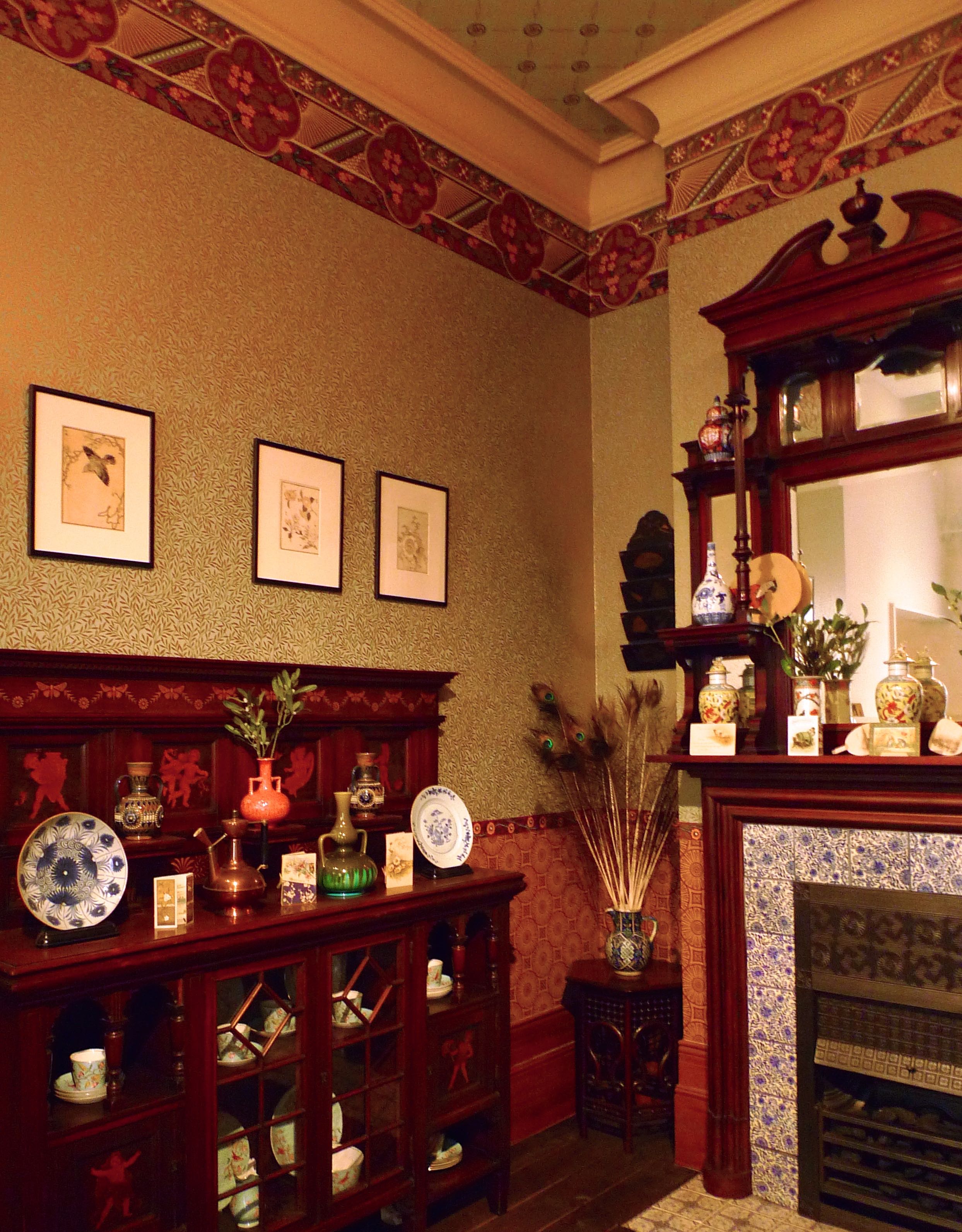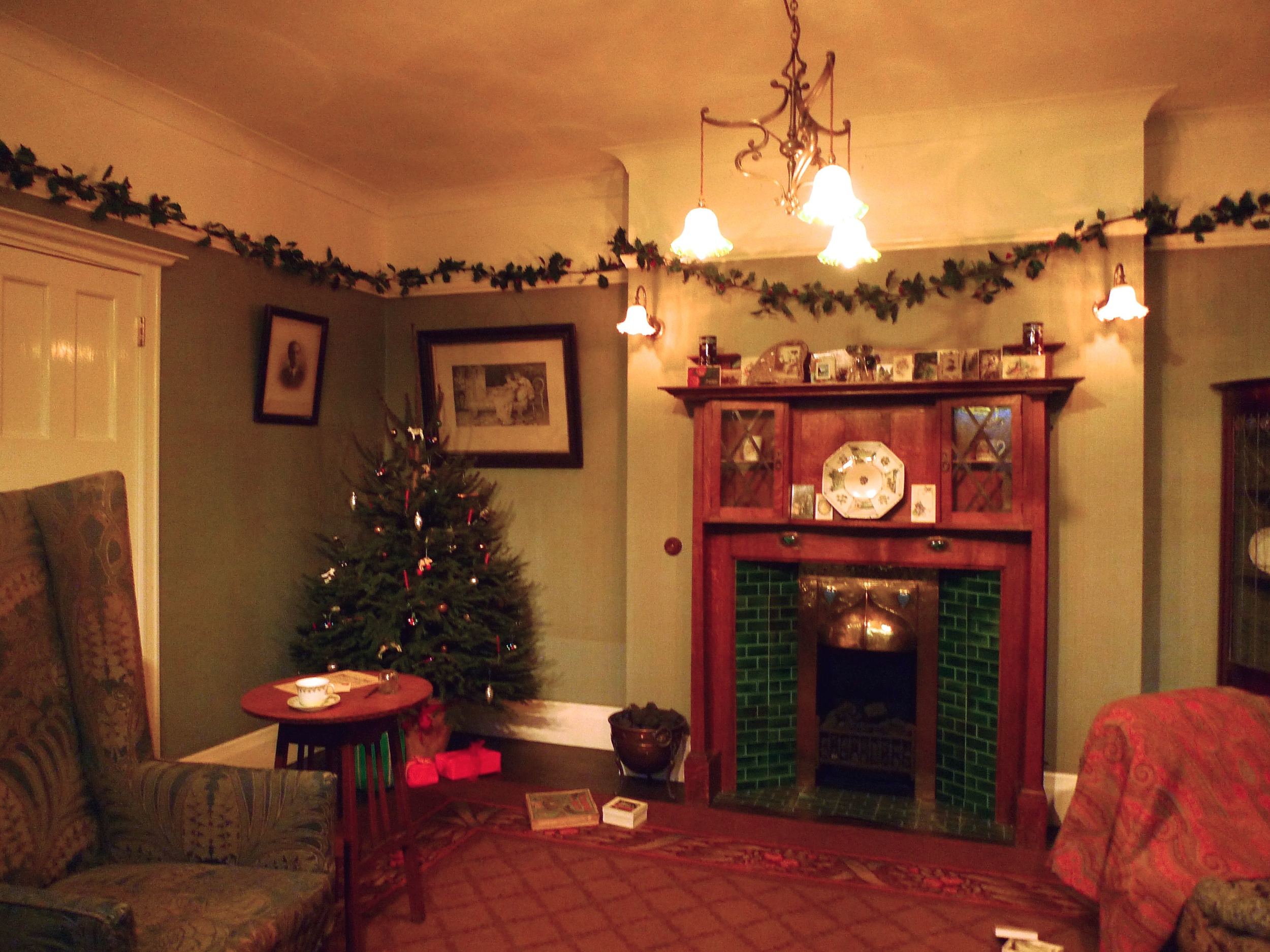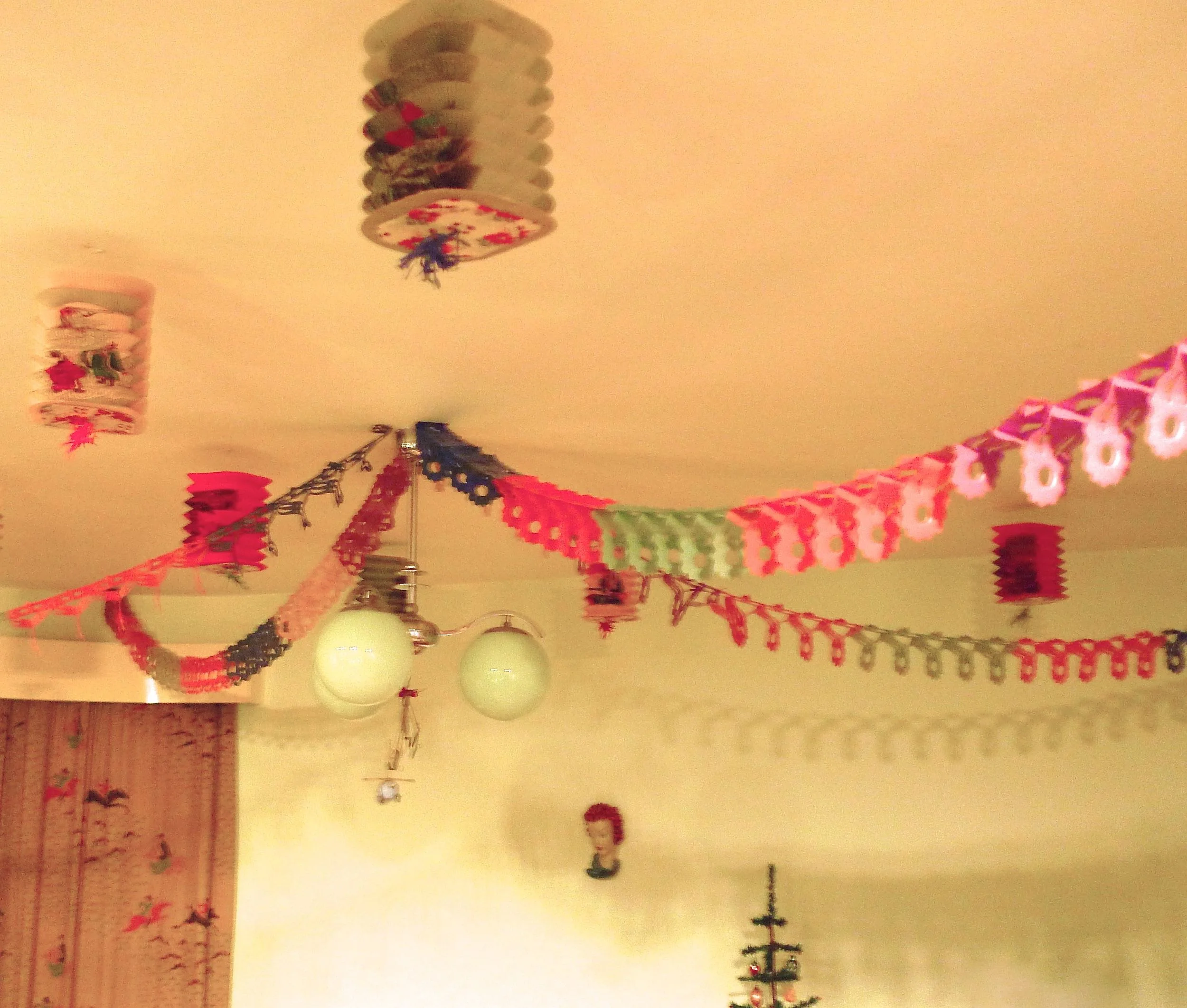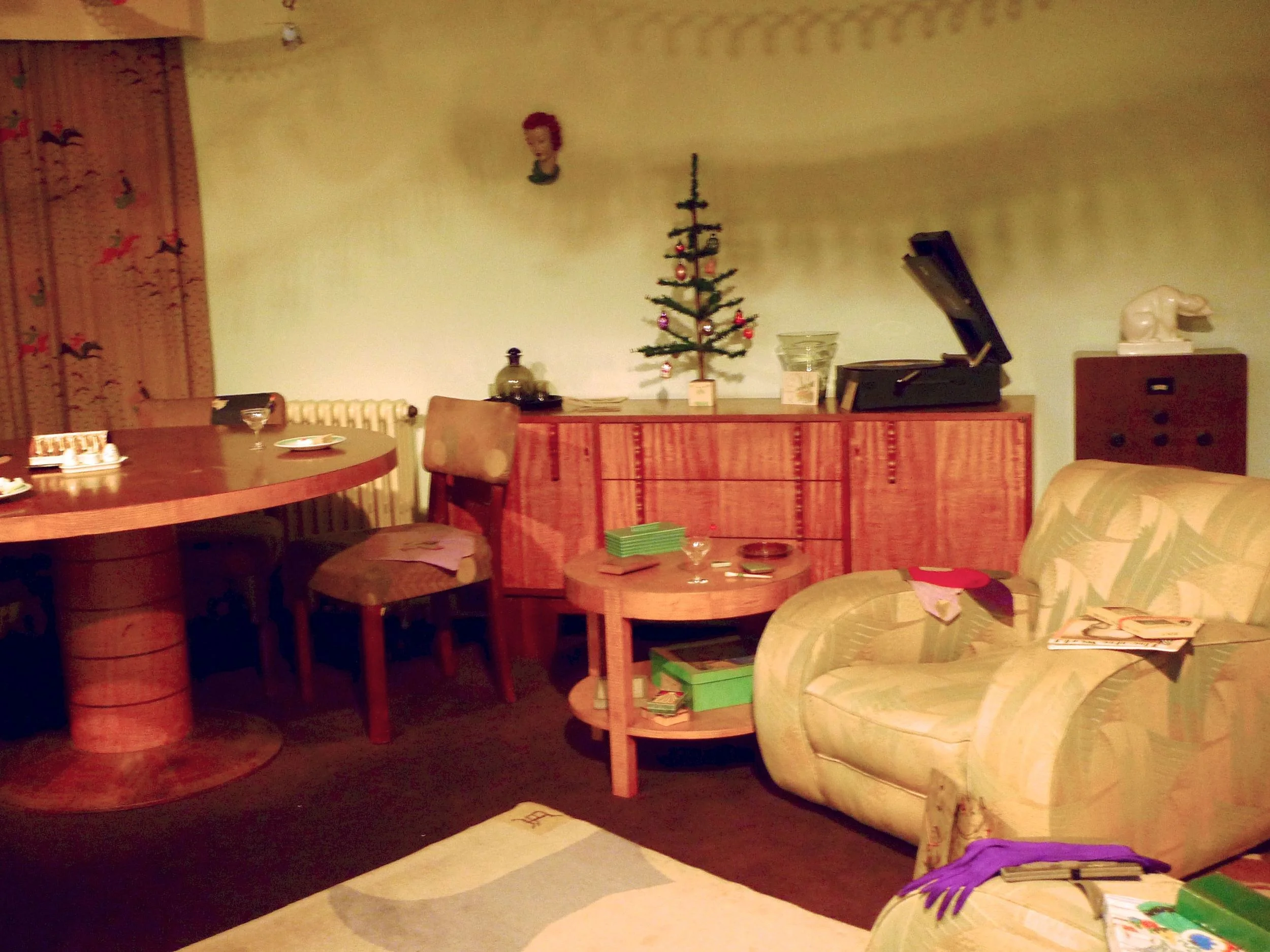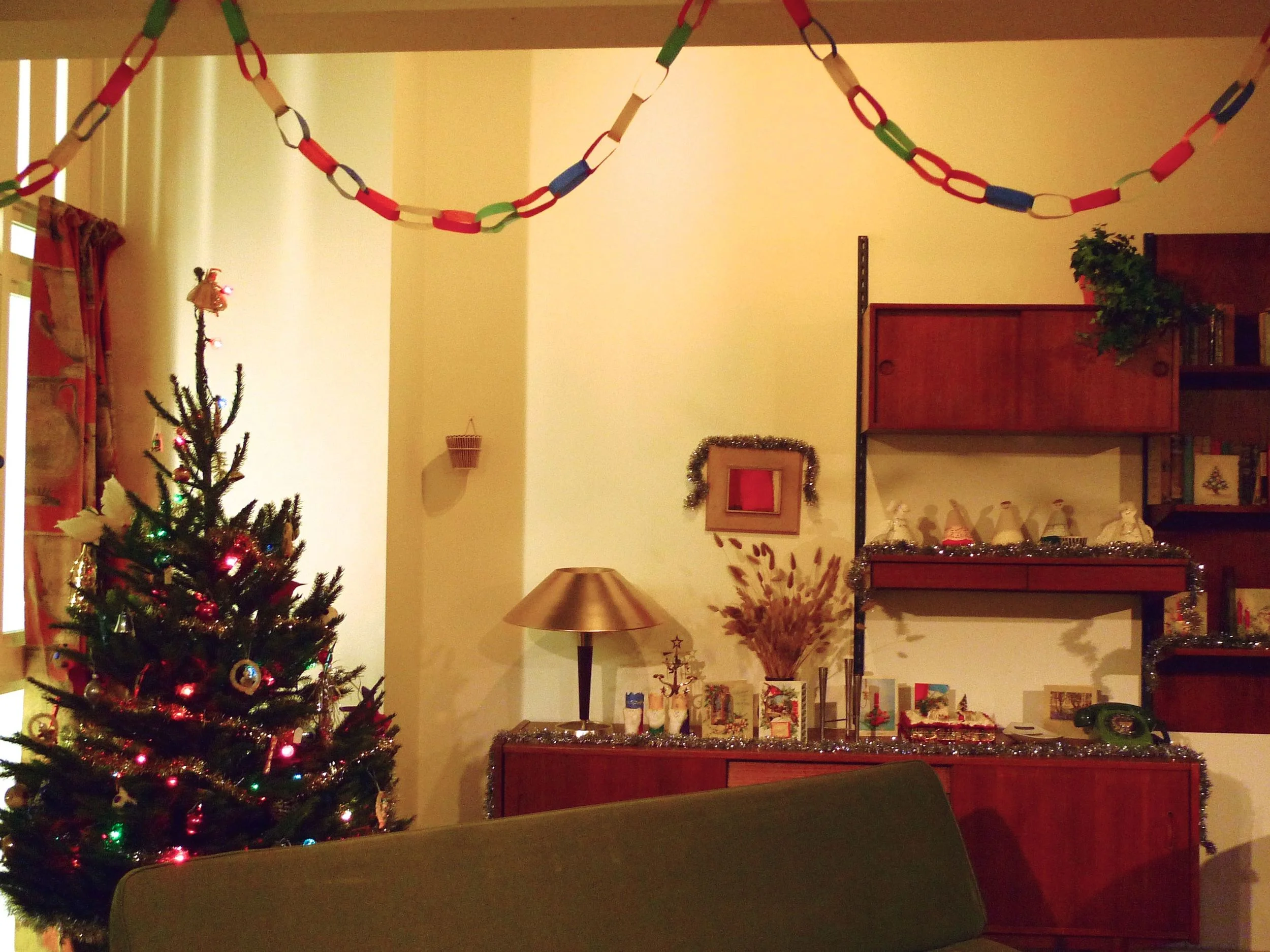On Saturday we popped up to town and into the Geffrye museum in Shoreditch. I visited the museum of the home and had a great time - I haven't shared those photos yet, but I'll share more in the New Year. On that first visit I learnt that each of the rooms is decorated in the traditional style of the period it depicts, so I was keen to head back and see what this meant.
I wasn't disappointed, it was fascinating.
Deck the halls with boughs of holly
It's 1630 and we're in the Hall - or the main room - of a middling London home. The room is decorated with evergreens, but it wouldn't have been done until Christmas Eve; while the evergreens were a Pagan custom the early Christians adopted them as a symbol of everlasting life.
Food-wise the table is set with the second course - a mix of savoury and sweet dishes, quite something when sugar was regarded a luxury. Christmas lasted for Twelve Nights, starting on Christmas Day - it was a time of fun and New Year and Twelfth Night providing high points.
A HALL IN 1630
We had Musick all the Afternoon
It's Christmas Day and we're now in the Parlour of a London townhouse in 1695. We'll spend the afternoon listening to music played on the viol and recorder before later going to the evening service at the church. There'll be dancing and fun, drinks of punch and snacks of apolives and anchovies and once again the room is decorated with evergreens.
Christmas had been banned during this period, following the Civil War and this room shows a much understated celebration, because despite the ban there is evidence that people still celebrated privately.
A PARLOUR IN 1695
Two jellies and a glass of wine
It's now the eighteenth century and this room - the Parlour- is set on an evening between Christmas and New Year where the family are taking supper. A friend calls and is offered two jellies and a glass of wine as he has missed supper.
It's in this period that a French visitor remarked on the English custom of wishing each other a Merry Christmas and a Happy New Year and giving presents...
Rost beef and Plumb Pudding
It's Christmas Day again (time is just flying past!) and we're about to have our traditional roast beef and plum pudding. Although turkey was introduced by 1530 it didn't replace beef as the main dish until the nineteenth century. And the plum pudding was served with the beef and not as dessert.
New Characters for Twelfth Night
It's now 1830 and we're in one of my favourite rooms at the Geffrye museum, I just love the colour of it, isn't it great? Anyway we're celebrating Twelfth Night in this Drawing room. By the nineteenth century the Christmas celebrations were becoming more elaborate again with old traditions reappearing and the Twelfth Night game became more like the modern day charades. The cake became more elaborately decorated with sugar frosting and gilded paper trimmings, now there's a tradition I'm happy with!
A DRAWING ROOM IN 1830
O Christmas Tree, O Christmas Tree
We're now in a Vicorian Drawing room for a family gathering in the evening of Christmas Day. The room is dominated by the Christmas tree which the family have decorated and placed presents underneath. It's during Queen Victoria's reign that many of our current day Christmas traditions started.
It's thought that Prince Albert's enthusiasm for the Christmas tree helped embed it into Christmas traditions, and while he is often credited with introducing it, it's more likely that it was Queen Charlotte, the German wife of George lll who did that.
And while I'm not quite that old the rooms are starting to resemble a Christmas I am more familiar with.
Wishing you an utterly charming time
In this room we're with a family celebrating Christmas in a more artistic manner; their decorations are inspired by the Aestheic Movement and it's love of all things Japanese. The Christmas card - and English invention - is prevalent here too. The first commercial card appeared in 1843, but it wasn't until the 1860s that it became more common to send cards.
By 1880 the Post Office were inundated with cards to deliver and they started to urge people to "post early for Christmas" although in 1880 it meant on the morning of December 24th!
The stockings were hung by the chimney with care
This next room reminds me of my previous house, not exactly the same but definite similarities. We're in the Drawing room, on Christmas Eve with a young family. The shopping has been completed on a bustling Oxford Street and now the young mum is home where she's decorated the tree with ropes of holly, with help from the maid. She's stopped for a well earned cup of tea before hanging the children's stockings on the fireplace - a new tradition adopted from America.
AN EDWARDIAN CHRISTMAS
I've been to a marvellous party
We're now in a flat in one of London's new mansion blocks, it's Christmas Eve and the young couple are hosting an early-evening cocktail party for friends and neighbours, and they're hoping to impress with their decorations and canapés.
I couldn't help but smile when I saw these garlands as I'm sure my parents had something very similar, and very delicate.
1930s CHRISTMAS DECORATIONS
The young couple won't be staying in London for Christmas but will motor down to family in Oxfordshire, where they're looking forward to hearing the Kings Speech, which was first broadcast in 1932.
Santa Claus is coming to town
It's Christmas morning and we're in the home of a young family and it's a scene that no doubt still happens across the world today. It reminds me very much of the Christmases as I grew up, and the card alongside this display was also reminiscent of my childhood Christmases too. It said "despite several reminders, the children's mother is doubtful that the children will remember which of their friends and relations sent which gifts, and is dreading having to write Thank- you notes without knowing what present was sent." Except in my case, we were encouraged to write our own thank you notes!
The other part that made me smile was that "her woman's magazine did suggest an alternative to the usual Christmas dinner" because they've really gone to town with that now.
Happy Christmas!
Finally we're in the modern-day Christmas - this room is set in mid-nineties loft-living converted warehouse in London's Docklands. There was a Nigella book on the recipe stand in the open plan kitchen and it looks as if a great festive dinner is about to take place.
I hope you've enjoyed this quick trip of Christmas through the ages as much as I did. In the New Year I'll share more from my previous visit to this fabulous museum.
If you don't get to visit my blog again before Christmas, let me wish you a very Happy Christmas - see you in 2016!

